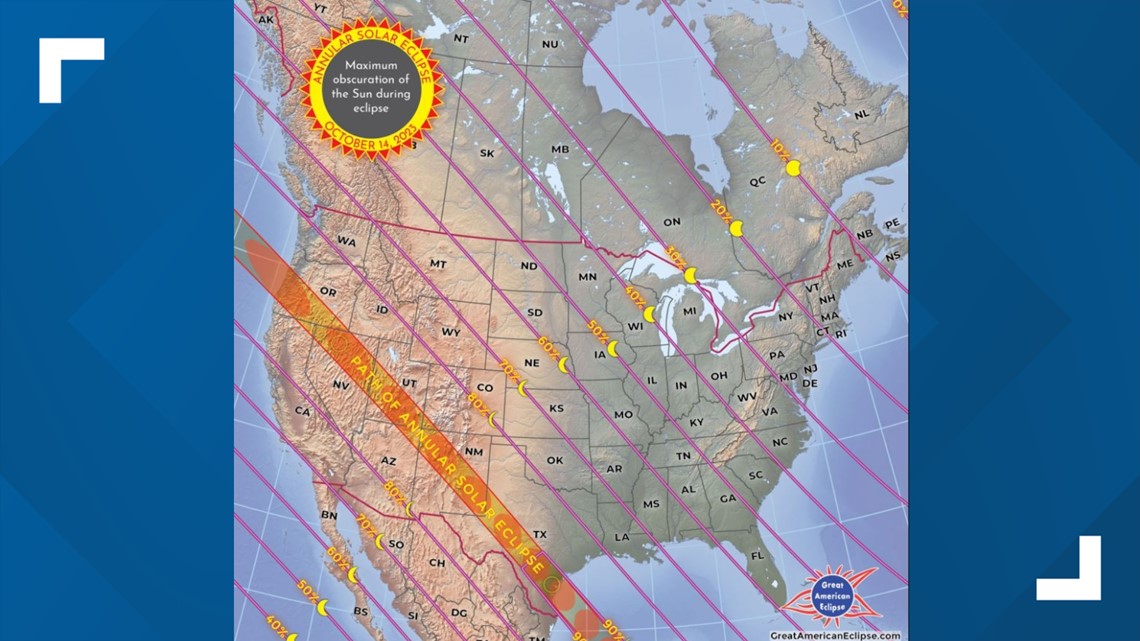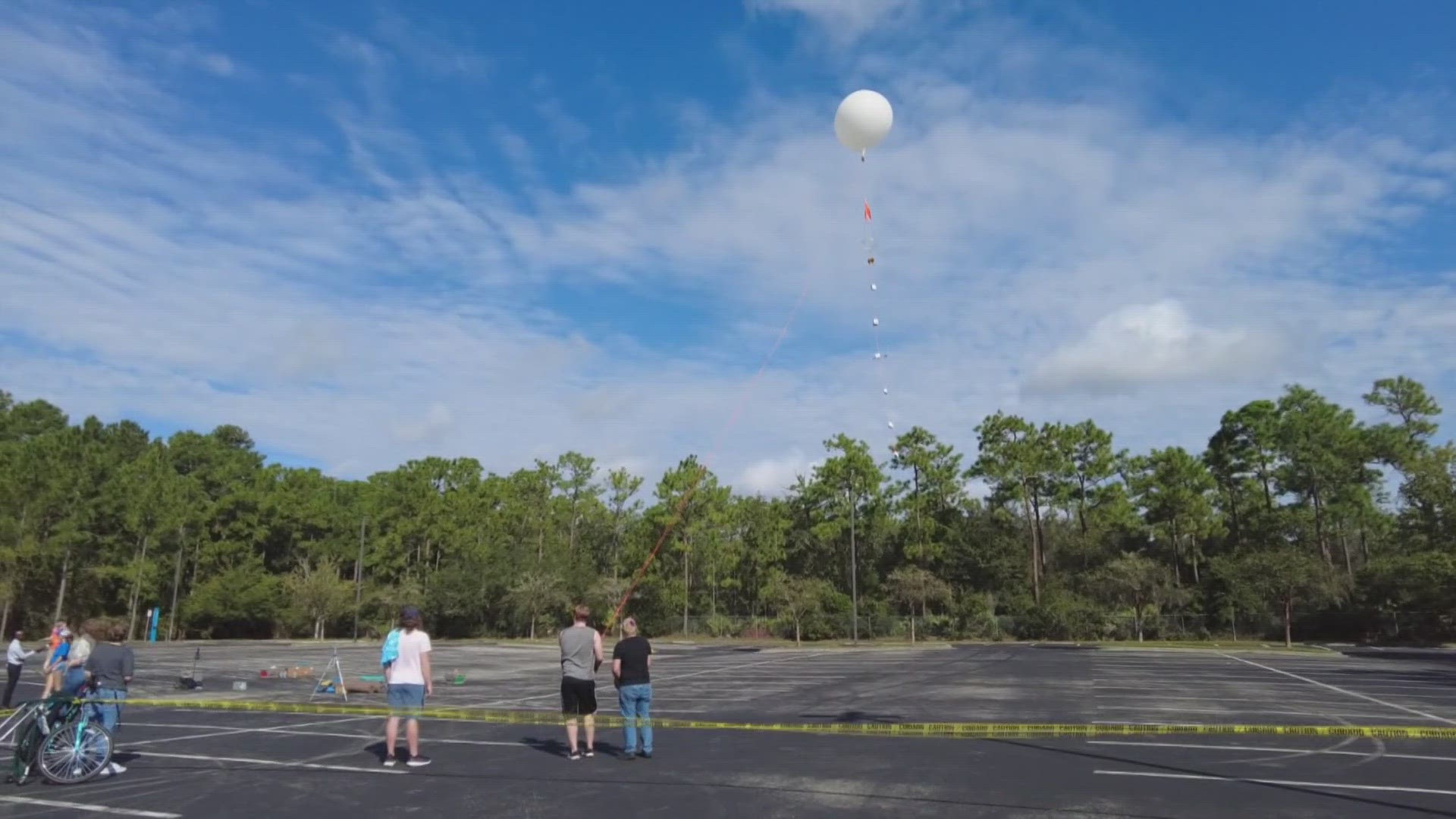JACKSONVILLE, Fla. — A weather balloon, a solar eclipse, and gravitational waves.
That's what students with the University of North Florida are working on as part of NASA's Nationwide Eclipse Ballooning Project. The goal of the project is to better understand the impact solar eclipses have on gravitational waves with the help of scientific high-altitude ballooning.
As a test run, students and researchers launched a high-altitude weather balloon Sunday morning at UNF in preparation for a final launch next month in Texas during an annual solar eclipse.
During the test launch, students inflated the balloon using helium gas and ran several tests like tracking the balloon's path, helium gas vent system, ozone sensors, and even a 360 degree camera.
UNF engineering student Dustin Leonard says the 360 degree camera will show live video to show the shadow of the moon cross the North American continent.
However, Sunday's testing balloon won't reach close to the real balloon's target height.
"Our target atmosphere is 85,000 feet," Leonard said.
"Primarily we are collecting data on gravity waves, so we are interested in the movement of the balloon, as it's affected by the atmospheric oscillations during the eclipse."
In simpler terms, an atmospheric gravity wave occurs during a solar eclipse when there is a sudden absence of sunlight and energy starts to move and is then counterbalanced by gravity.
"We know the solar eclipse will produce gravity waves in the upper atmosphere, so we are going to get to the right place at the right time," said Leonard.
The final launches of the high-altitude balloon will be on the annual eclipse in Texas is on October 14, 2023, and the total solar eclipse in Arkansas on April 8, 2024.
The First Coast will be able to see the solar eclipse in October but it will only cover roughly half of the sun. Whereas in parts of Texas, 100 percent of the sun will be obscured.



